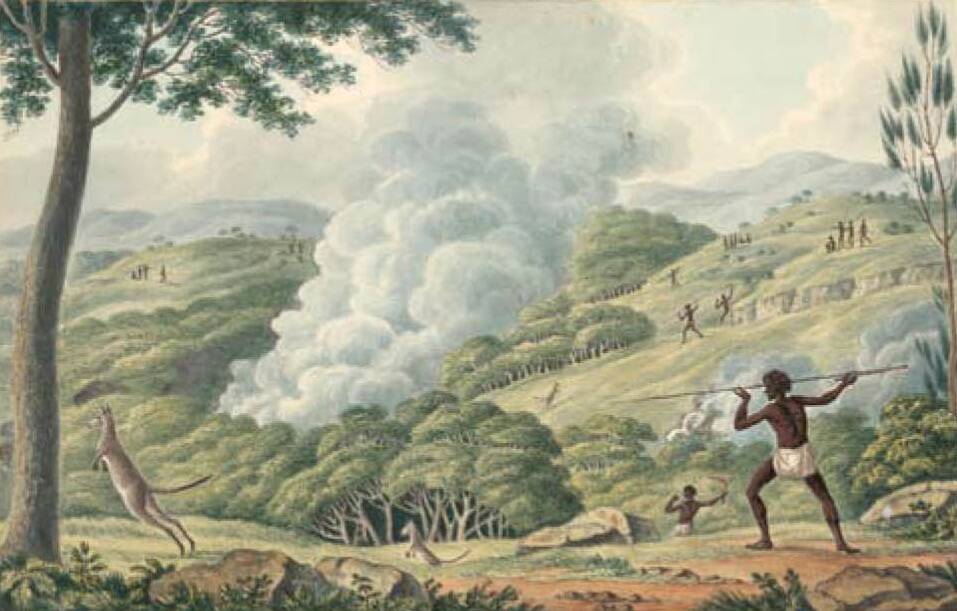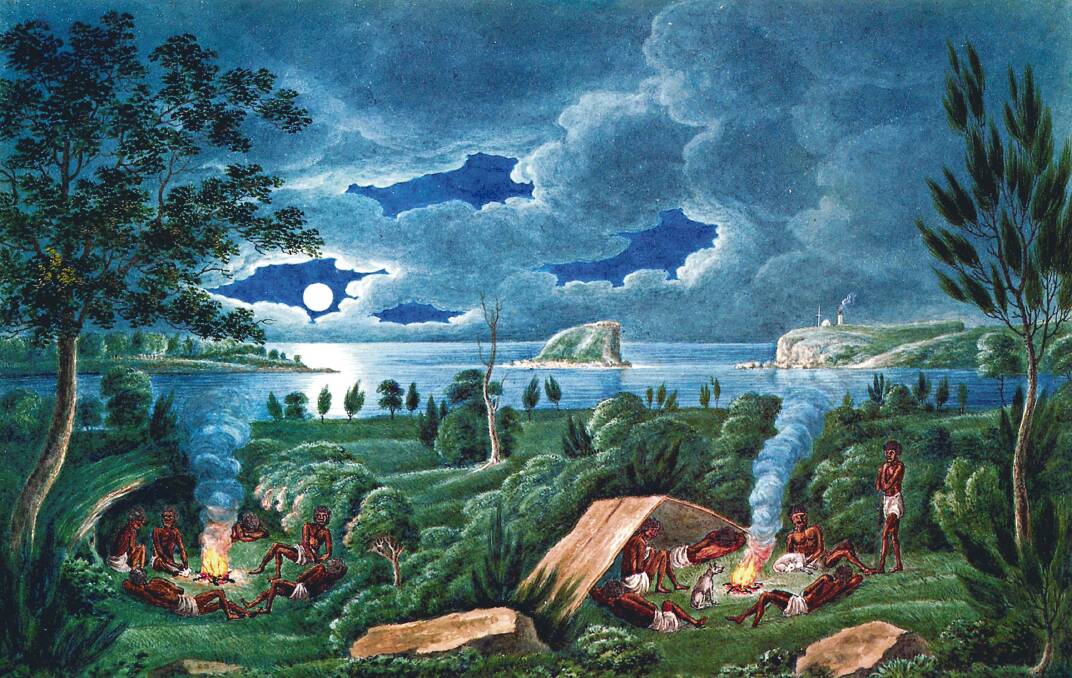Beyond the Myth: Unveiling the Complex Reality of Aboriginal Life Before Colonization
Beyond the Myth: Unveiling the Complex Reality of Aboriginal Life Before Colonization

The romanticized image of Indigenous peoples living in blissful harmony with nature, untouched by conflict or hardship, is a pervasive myth that continues to shape perceptions of Aboriginal history. This idealized vision, often presented in popular culture and historical narratives, obscures the complex and multifaceted reality of Aboriginal life before European colonization.
While it is true that many Aboriginal societies held a deep respect for the natural world and lived in a sustainable relationship with their environment, the notion of universal peace and harmony is a gross oversimplification. Aboriginal cultures were diverse, dynamic, and often involved intricate social structures, political alliances, and conflicts. To understand the true nature of Aboriginal life, we must move beyond the romanticized myth and delve into the historical realities of these complex societies.
Related Articles: Beyond the Myth: Unveiling the Complex Reality of Aboriginal Life Before Colonization
- A Tapestry Of Tongues: How Australia’s Linguistic Landscape Reflects Its Diverse History
- Unveiling The Tapestry Of Indigenous Nations: Exploring The Interactive Aboriginal Countries Map
- Breaking Barriers: The Challenges Faced By Eddie Gilbert, Aboriginal Cricket Legend
- A Tapestry Of Time: Exploring Key Beliefs In Aboriginal Spirituality
- Unveiling The Land Of The Palawa: A Journey Through Tasmania’s Indigenous Heritage
Unmasking the Myth: A Deeper Look at Aboriginal History
The myth of the "noble savage" living in pristine harmony with nature often stems from a desire to portray Aboriginal cultures as idyllic and innocent, contrasting them with the perceived savagery and greed of European colonizers. This romanticized view ignores the realities of Aboriginal life, which included:
-
Complex Social Structures: Aboriginal societies were not homogenous, but rather comprised of diverse groups with distinct languages, customs, and traditions. These societies were often structured around kinship systems, clan affiliations, and intricate social hierarchies.
-
Political Alliances and Conflicts: Aboriginal groups engaged in both alliances and conflicts, often vying for resources, territory, and influence. These conflicts could involve raids, skirmishes, and even full-scale warfare.

-
Environmental Challenges: While many Aboriginal societies lived in harmony with their environment, they also faced challenges such as droughts, floods, and disease outbreaks. These challenges often led to resource scarcity and competition.

Internal Disputes: Like any human society, Aboriginal communities experienced internal disputes, disagreements, and social tensions. These could stem from issues of power, wealth, or even personal grievances.
Beyond the Myth: A Focus on Historical Evidence
To understand the true nature of Aboriginal life, it is essential to rely on historical evidence rather than romanticized narratives. Archaeological findings, oral histories, and anthropological studies provide valuable insights into the complexities of Aboriginal societies before colonization.

Archaeological Evidence: Archaeological excavations have revealed evidence of complex social structures, sophisticated technologies, and organized systems of trade and exchange within Aboriginal communities. These findings challenge the notion of Aboriginal societies as primitive or unsophisticated.
Oral Histories: Oral traditions, passed down through generations, provide valuable insights into Aboriginal customs, beliefs, and history. While oral histories can be subjective and influenced by cultural perspectives, they offer a unique and valuable source of information that complements archaeological evidence.
Anthropological Studies: Anthropologists have conducted extensive research on Aboriginal cultures, documenting their social structures, political systems, and religious beliefs. These studies provide valuable insights into the diversity and complexity of Aboriginal life.
The Impact of Colonization on Aboriginal Societies
The arrival of European colonists had a devastating impact on Aboriginal societies, disrupting their social structures, economies, and traditional ways of life. The introduction of disease, the displacement of communities, and the imposition of colonial laws led to widespread suffering and cultural loss.
The myth of Aboriginal harmony served as a justification for colonization, portraying Aboriginal societies as primitive and in need of European intervention. This narrative allowed colonizers to claim Aboriginal lands and resources, dispossessing Indigenous peoples of their ancestral territories and cultural heritage.
Reclaiming the Narrative: Challenging the Myth
It is crucial to challenge the romanticized myth of Aboriginal harmony and acknowledge the complex realities of Aboriginal life before colonization. This requires a commitment to:
-
Educating ourselves: Learning about Aboriginal history and culture from authentic sources, including Aboriginal voices and perspectives.
-
Challenging stereotypes: Identifying and challenging the pervasive myths and stereotypes that perpetuate harmful narratives about Aboriginal people.
-
Supporting Aboriginal self-determination: Promoting Aboriginal self-determination and empowering Indigenous communities to reclaim their narratives and cultural heritage.
Conclusion: Moving Beyond the Myth
The myth of Aboriginal harmony is a harmful simplification that obscures the complex and nuanced realities of Aboriginal life before colonization. By acknowledging the diversity, resilience, and dynamism of Aboriginal societies, we can begin to dismantle these harmful narratives and promote a more accurate and respectful understanding of Indigenous history and culture.
FAQ
Q: What are some examples of conflicts between Aboriginal groups?
A: Conflicts between Aboriginal groups were common and could stem from various factors, such as competition for resources, territory disputes, or social tensions. For example, the Yarra tribe in Victoria were known to engage in warfare with neighboring groups, while the Eora people in Sydney had ongoing conflicts with the Dharug tribe.
Q: Did Aboriginal societies have laws and punishments?
A: Aboriginal societies had intricate systems of law and order, often based on oral traditions, kinship structures, and customary practices. Punishments for offenses could range from social ostracization to physical retribution.
Q: How did Aboriginal societies manage their resources sustainably?
A: Aboriginal societies developed sophisticated systems of resource management, often based on deep knowledge of their environment and traditions of sustainable harvesting and conservation. These practices ensured the long-term viability of their resources.
Q: What are some ways to learn more about Aboriginal history and culture?
A: There are many resources available to learn more about Aboriginal history and culture. You can visit museums and cultural centers, read books and articles by Aboriginal authors, attend educational workshops, and engage with Aboriginal communities directly.
Q: What can I do to help address the ongoing challenges faced by Aboriginal communities?
A: You can support Aboriginal self-determination by advocating for policies that promote Indigenous rights and empowerment. You can also support Aboriginal businesses and organizations, and educate yourself about the history of colonization and its ongoing impacts on Indigenous communities.

Closure
Thus, we hope this article has provided valuable insights into Beyond the Myth: Unveiling the Complex Reality of Aboriginal Life Before Colonization. We thank you for taking the time to read this article. See you in our next article!


